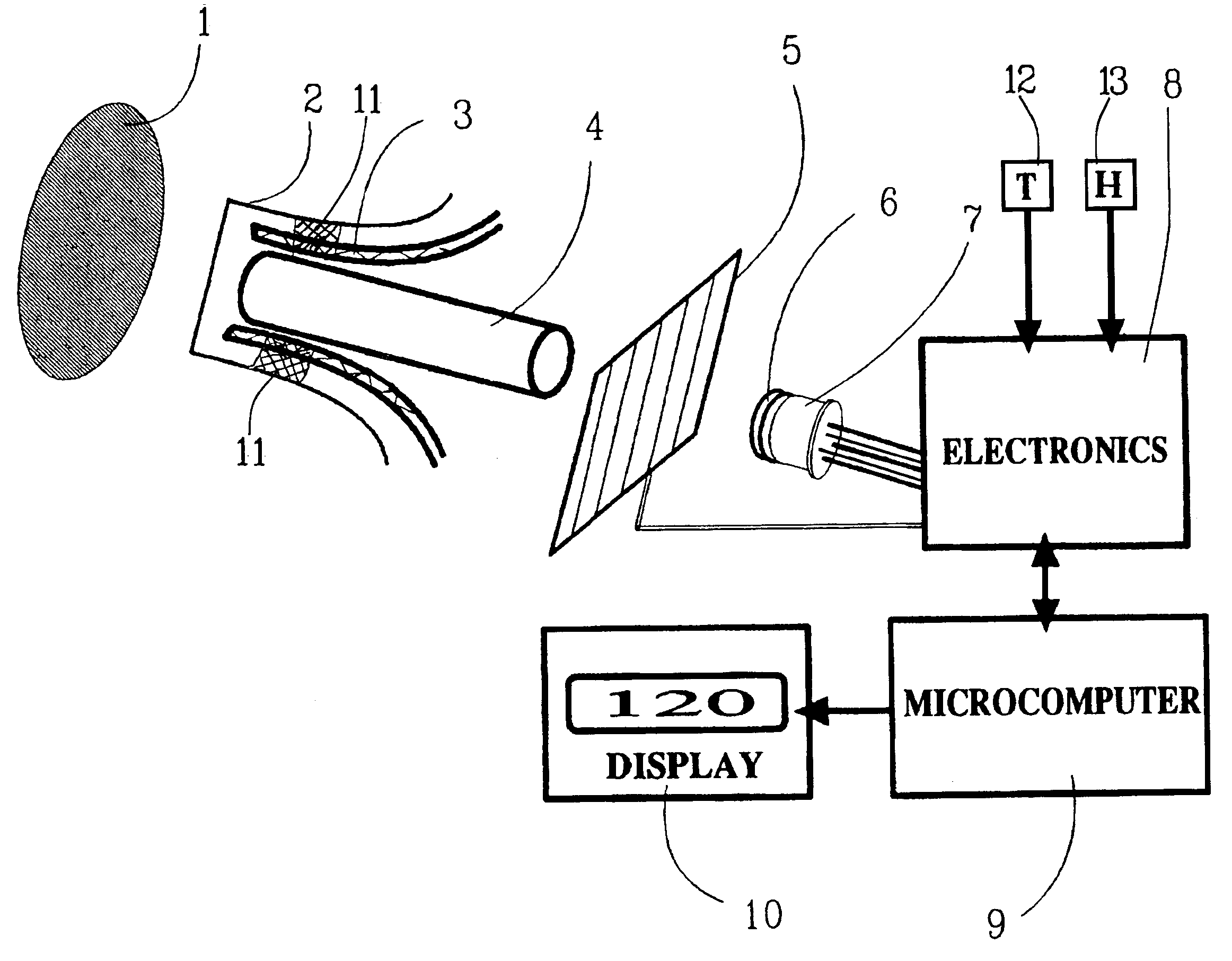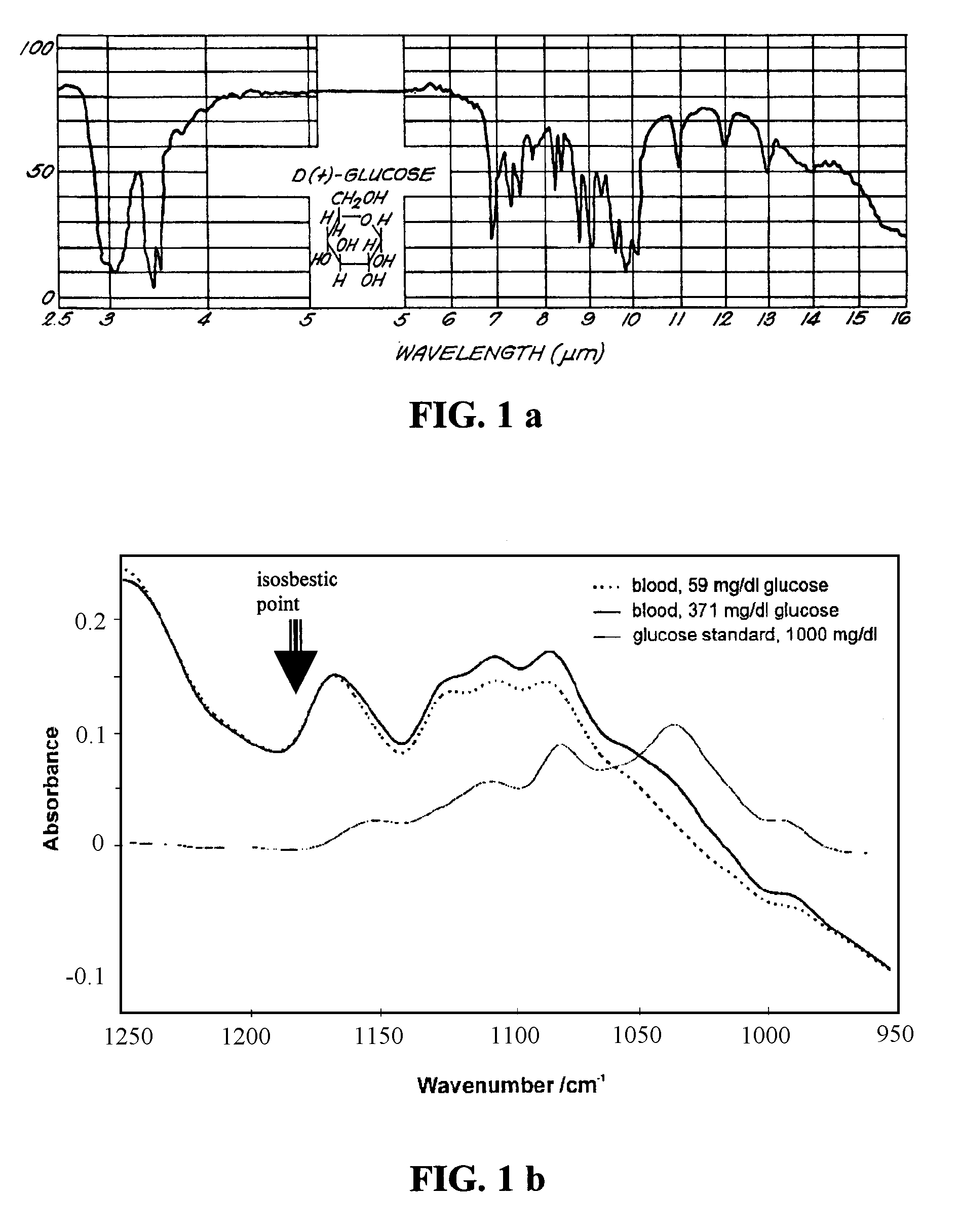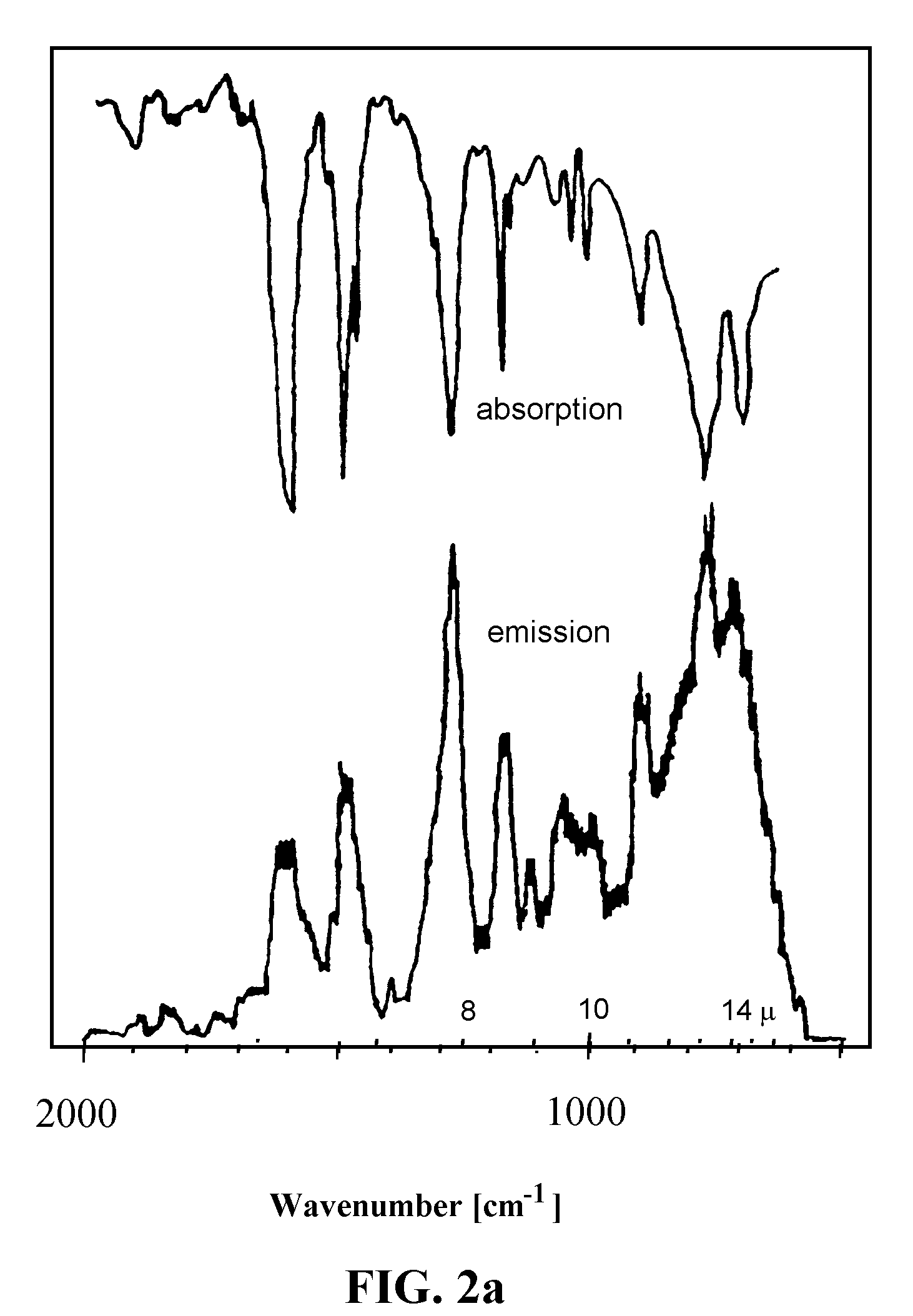Thermal Emission Non-Invasive Analyte Monitor
a non-invasive, analyte technology, applied in the field of infrared spectral measurement methods and instruments, can solve the problems of poor compliance, unsatisfactory compliance, and cataracts among the most distressing and costly to society
- Summary
- Abstract
- Description
- Claims
- Application Information
AI Technical Summary
Benefits of technology
Problems solved by technology
Method used
Image
Examples
Embodiment Construction
[0033] The present invention is directed at an instrument and a method for a noninvasive detection of the concentration of analytes in human body tissues, for example, glucose in blood, using naturally occurring infrared radiation in the micrometer spectral region of the human body heat emission. It relates more specifically to method and instrument that incorporates additional temperature and humidity sensors and allows better normalization of spectrally-specific analyte signal for a grater precision and accuracy of determination of the analytes' concentration and universal calibration in, for example, non-invasive blood glucose measurements in human subjects.
[0034] The scientific understanding that the molecular signature frequency of glucose is focused in the mid-infrared region, as shown on FIG. 1, and of the correspondence between the emission and absorption spectra, as shown on FIG. 2, have lead to the invention.
[0035] Absorption of radiation is characterized by selective re...
PUM
 Login to View More
Login to View More Abstract
Description
Claims
Application Information
 Login to View More
Login to View More - R&D
- Intellectual Property
- Life Sciences
- Materials
- Tech Scout
- Unparalleled Data Quality
- Higher Quality Content
- 60% Fewer Hallucinations
Browse by: Latest US Patents, China's latest patents, Technical Efficacy Thesaurus, Application Domain, Technology Topic, Popular Technical Reports.
© 2025 PatSnap. All rights reserved.Legal|Privacy policy|Modern Slavery Act Transparency Statement|Sitemap|About US| Contact US: help@patsnap.com



